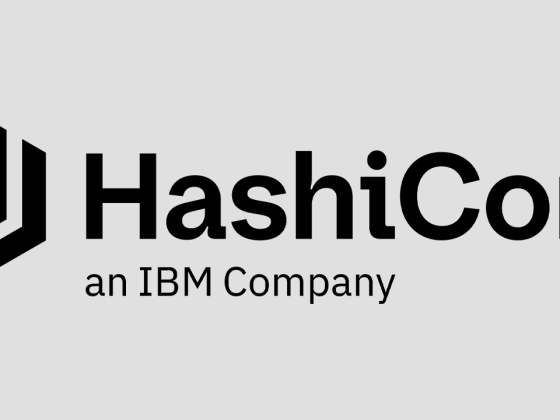IBM (NYSE: IBM) unveiled the next generation of its LinuxONE server, a highly scalable Linux and Kubernetes-based platform, designed to deliver scalability to support thousands of workloads in the footprint of a single system[1]. IBM LinuxONE Emperor 4 features capabilities that can reduce clients’ energy consumption. For example, consolidating Linux workloads on five IBM LinuxONE Emperor 4 systems instead of running them on compared x86 servers under similar conditions can reduce energy consumption by 75%, space by 50%, and the CO2e footprint by over 850 metric tons annually[2].
According to an IBM IBV study, 48% of CEOs across industries say increasing sustainability is one of the highest priorities for their organization in the next two to three years. However, 51% also cite sustainability as among their greatest challenges in that same timeframe, with lack of data insights, unclear ROI, and technology barriers, as hurdles. For these CEOs, scaling their business with modern infrastructure can often be one of the barriers to achieving sustainability goals.
From our partners:
“Data centers are energy intensive, and they can account for a large portion of an organization’s energy use. But data and technology can help companies turn sustainability ambition into action,” said Marcel Mitran, IBM Fellow, CTO of Cloud Platform, IBM LinuxONE. “Reducing data center energy consumption is a tangible way to decrease carbon footprint. In that context, migrating to IBM LinuxONE is designed to help clients meet their scale and security goals, in addition to meeting sustainability goals for today’s digital business.”
IBM LinuxONE Emperor 4 is an engineered scale-out-on-scale-up system designed to enable clients to run workloads at sustained high density and increase capacity by turning on unused cores without increasing their energy consumption and associated greenhouse gas emissions.2 In addition, clients can track energy consumption with IBM Instana Observability on LinuxONE.
IBM’s portfolio of sustainability technologies includes solutions to design, deploy and manage energy efficient infrastructures and innovations with a hybrid cloud approach. IBM LinuxONE is one solution within the portfolio designed to optimize data centers by reducing energy consumption and improving energy efficiency. IBM LinuxONE Emperor 4 will be generally available globally on September 14, 2022, with entry and mid-range systems to follow in 1H 2023.
Respond to unpredictable demand
Shifts in the global economy have driven volatility and require flexibility in operational and technical decision-making. Built with the same security, scalability and reliability that has been the hallmark of IBM infrastructure, the next-generation LinuxONE also offers cloud-like flexibility. With a system built for rebalancing of resources in combination with on demand capacity, workloads can scale-up and scale-out dynamically and non-disruptively.
“For CIOs, change is happening at an unprecedented rate and requires organizations to invest in infrastructure that is stable, high value and energy-efficient,” said Bjorn Stengal, IDC Global Sustainability Research and Practice Lead. “IBM LinuxONE provides organizations with a secured, scalable architecture to meet their government regulations and customer expectations.”
At Citi, the bank’s sustainability strategy is driven by a commitment to advance solutions that address climate change and support the transition to a low-carbon economy. Operationally, Citi is focused on reducing the environmental footprint of its facilities, including through improving hosting densities with lower power consumption. Citi is hosting MongoDB on IBM LinuxONE, leveraging the platform’s security and resiliency, as well as elastic capacity to address unexpected demand.
“As our business grows and becomes increasingly digital-first, traditional IT solutions add more physical servers and increase required floor space,” said Martin Kennedy, Managing Director, Citi Technology Infrastructure. “IBM LinuxONE with MongoDB provides vertical scale and critical protection against data breaches and cyber-attacks, helping optimize data centers while lowering our overall carbon footprint.”
Sustainable without compromising security
The new LinuxONE system also features pervasive encryption to protect data at-rest and in-flight, a priority for clients in regulated industries such as financial services. Building on IBM’s cloud security leadership in confidential computing, IBM LinuxONE Emperor 4 protects data in use while providing end-to-end encryption. This comprehensive data protection profile provides businesses with a data protection strategy that underpins current and anticipated future cyber security protocols.
Hybrid cloud platform for cloud and on-premises workloads
Today’s hybrid and multicloud environments require clients to deploy workloads where it makes the most sense for their business needs. IBM Cloud Hyper Protect Virtual Servers provide a public cloud environment in which the cloud tenant maintains complete authority over Linux-based virtual servers for workloads that contain sensitive data. Built on IBM LinuxONE and running on IBM Cloud, this service provides customers complete authority over their encrypted data, workloads and encryption keys – not even IBM as the cloud provider has access.
IBM LinuxONE Emperor 4 supports a large number of Linux and Red Hat OpenShift-certified workloads, including data serving, core banking and digital assets. IBM LinuxONE Emperor 4 receives support from IBM Ecosystem partners, such as IBM LinuxONE Emperor 4 receives support from IBM Ecosystem partners, such as Clari5, Illumio, Metaco, MongoDB, NGINX, Nth Exception, Fiorano Software, Fujitsu Limited, Pennant, SQ Solution, Sysdig and Temenos.
With cloud native development on LinuxONE, teams of developers can deliver portable and agile solutions without having to learn a new operating system. IT managers need a system that is easy to operate that supports common tools and provides a foundation for the future. LinuxONE enables managers to focus on delivering new services, instead of managing complexity across a vast number of servers. Based on Linux and Kubernetes, everyone benefits from open standards and an ecosystem that includes modern DevSecOps and cloud native tools.
“Together, Temenos and IBM LinuxONE can help major banks move to a modern architecture in a safe, predictable and scalable way, while reducing total cost of ownership and meeting their ESG obligations,” said Philip Barnett, President of Strategy Growth at Temenos. “Temenos core banking running on the new LinuxONE servers can operate at a fraction of the cost of general-purpose servers and offer great scalability, resilience and speed to market.”
To learn more, please visit:
- IBM LinuxONE TCO Calculator: by answering just a few questions such as hardware, workload type and software, the IBM LinuxONE cost estimator provides a high-level total cost of ownership based on industry-proven assumptions.[3]
- Register for the IBM zDay, a no-cost virtual conference, on Sept. 15, 2022 to learn more about LinuxONE through a dedicated track of sessions
- IBM LinuxONE Expert Care offers a way of attaching services and support through tiers at the time of product purchase. This offering provides the client an optimum level of support over multiple years for mission-critical requirements of the IT infrastructure.
- IBM Technology Services provide infrastructure services to help clients plan, deploy and optimize their IBM LinuxONE server and software stack to meet business needs.
Statements regarding IBM’s future direction and intent are subject to change or withdrawal without notice and represent goals and objectives only.
About IBM
IBM is a leading global hybrid cloud and AI, and business services provider, helping clients in more than 175 countries capitalize on insights from their data, streamline business processes, reduce costs and gain the competitive edge in their industries. Nearly 3,800 government and corporate entities in critical infrastructure areas such as financial services, telecommunications and healthcare rely on IBM’s hybrid cloud platform and Red Hat OpenShift to affect their digital transformations quickly, efficiently, and securely. IBM’s breakthrough innovations in AI, quantum computing, industry-specific cloud solutions and business services deliver open and flexible options to our clients. All of this is backed by IBM’s legendary commitment to trust, transparency, responsibility, inclusivity, and service. For more information, visit www.ibm.com
Media Contact:
Ashley Peterson
[email protected]
[1] Performance result is extrapolated from IBM internal tests running in an IBM LinuxONE Emperor 4 LPAR with 24 dedicated cores, 1536 GB memory and FS9200 storage NGINX pods on Red Hat OpenShift Container Platform (RHOCP) 4.10 running on a RHEL 8.5 KVM host. 64 RHOCP Compute nodes with 230 NGINX pods were running in parallel. The KVM guests with RHOCP Compute nodes were configured with 2 vCPUs and 16 GB memory each. The KVM guests with RHOCP Management nodes were configured with 16 vCPUs and 128 GB memory each. Results may vary.
[2] Compared 5 IBM Machine Type 3931 Max 125 model consists of three CPC drawers containing 125 configurable cores (CPs, zIIPs, or IFLs) and two I/O drawers to support both network and external storage versus 192 x86 systems with a total of 10364 cores. IBM Machine Type 3931 power consumption was based on inputs to the IBM Machine Type 3931 IBM Power Estimation Tool for a memo configuration. x86 power consumption was based on March 2022 IDC QPI power values for 7 Cascade Lake and 5 Ice Lake server models, with 32 to 112 cores per server. All compared x86 servers were 2 or 4 socket servers. IBM Z and x86 are running 24x7x365 with production and non-production workloads. Savings assumes a Power Usage Effectiveness (PUE) ratio of 1.57 to calculate additional power for data center cooling. PUE is based on Uptime Institute 2021 Global Data Center Survey. CO2e and other equivalencies that are based on the EPA GHG calculator use U.S. National weighted averages. Results may vary based on client-specific usage and location.
[3]Disclaimer: This tool provides a high level view of estimated costs and potential savings using publicly available IBM and third party server and pricing information in the United States as well as certain other information in consolidating from an x86 server environment to a LinuxONE environment. For a “Total Cost of Ownership” estimate, this tool considers certain factors involved in a three or five-year total cost of ownership including hardware costs, workload type, IBM and ISV software costs, certain facility costs (space, energy), maintenance charges, server utilization, hypervisors and migration. x86 hardware pricing is based on IBM analysis of U.S. prices as of February 2021 from IDC with a 30% discount. Certain assumptions used in the tool are based on data from hundreds of client studies performed by IBM and your results will vary depending on your environment and other factors. The information and data used to generate the results in the tool is current as of February 2021. Results will also vary based on the selections you make in using the tool. The output from the tool, including, but not limited to any accompanying summary of potential savings are estimates only and are provided on an ‘AS IS’ BASIS. Any reliance by you on using the tool and any output is at your sole risk and will not create any liability or obligation for IBM. IN NO EVENT WILL IBM BE LIABLE TO ANY PARTY FOR ANY DIRECT, INDIRECT, SPECIAL OR OTHER CONSEQUENTIAL DAMAGES FOR ANY USE OF THIS TOOL, WEB SITE, OR ON ANY OTHER HYPER LINKED WEB SITE, INCLUDING, WITHOUT LIMITATION, ANY LOST PROFITS, BUSINESS INTERRUPTION, LOSS OF PROGRAMS OR OTHER DATA ON YOUR INFORMATION HANDLING SYSTEM OR OTHERWISE, EVEN IF WE ARE EXPRESSLY ADVISED OF THE POSSIBILITY OF SUCH DAMAGES. This tool is not for use in countries where such comparisons are limited or prohibited by law.
For enquiries, product placements, sponsorships, and collaborations, connect with us at [email protected]. We'd love to hear from you!
Our humans need coffee too! Your support is highly appreciated, thank you!








